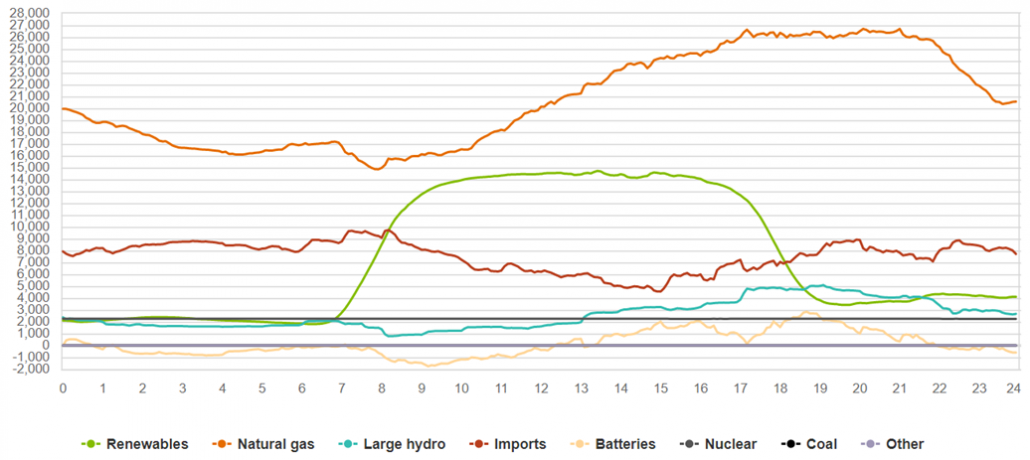California Keeps the Power On despite Heat-Driven Record Demand
By Christian Roselund
California managed to avoid major power outages despite record electricity demand during a heatwave that lasted from 6 September through 8 September, 2022. The state’s grid operator mobilized a variety of resources including voluntary reduction of power usage and batteries to keep the lights on during this period. These strategies were a success, despite electricity demand reaching over 52.061 gigawatts – nearly 2 gigawatts higher than the previous record – on 6 September.
This record demand was driven by widespread use of air conditioning in response to a heatwave. The state’s capitol, Sacramento, set a new record high temperature at 46C on 6 September. The next two days saw highs of 42C and 44C respectively. The greatest challenges for the grid came in the early evening when temperatures remained high but output from the state’s solar fleet had begun to decline. The new 52 gigawatt record for power demand was set at 16:57 on 6 September, when large-scale solar output had fallen to 5.401 gigawatts from a high of more than 12.7 gigawatts.
Despite these challenging conditions, the worst outage reported was 8,000 customers losing power on 8 September. This is very minor compared to the 800,000 customers who lost power during a heatwave in August 2020, which prompted the state to develop new strategies for electricity system resilience.

California utilities have been adding grid connected battery capacity to enable more power delivery for evening use, based on stored energy that was generated by solar PV earlier in the day. The California grid-connected storage fleet is now the world’s largest at 3.613 gigawatts as of 1 June 2022. Batteries played a larger role in meeting the surge in power demand than in previous crises. At 16:55 pm during peak demand batteries were supplying 1.012 gigawatts, but at 18:40, when demand was still high and solar output was had fallen to only 1.158 gigawatts, battery output peaked at 2.839 gigawatts.
Another factor was the state’s demand response program. The California Independent System Operator (CAISO) activated “flex alerts” on all three days and issued level 2 emergency alerts on 7 September and 8 September. CAISO’s tactics including texting residents in 24 counties in both English and Spanish, urging them to reduce electricity usage. This appears to have been responsible for the 2.5 gigawatt fall in electricity demand that occurred in the 30 minutes after CAISO sent out a text alert on 6 September.
However, it was natural gas, imports, and large hydro (which in California does not qualify as renewable) that delivered most of the kilowatt-hours after 18:00 when solar-driven renewable output waned. Additionally, the Diablo Canyon nuclear power plant also provided a steady 2.247 gigawatts of output, and during most of the 6 September heat event contributed more power than batteries.
Source: CEA Research
News coverage: California avoids widespread rolling blackouts as heat strains power grid (CNBC)
